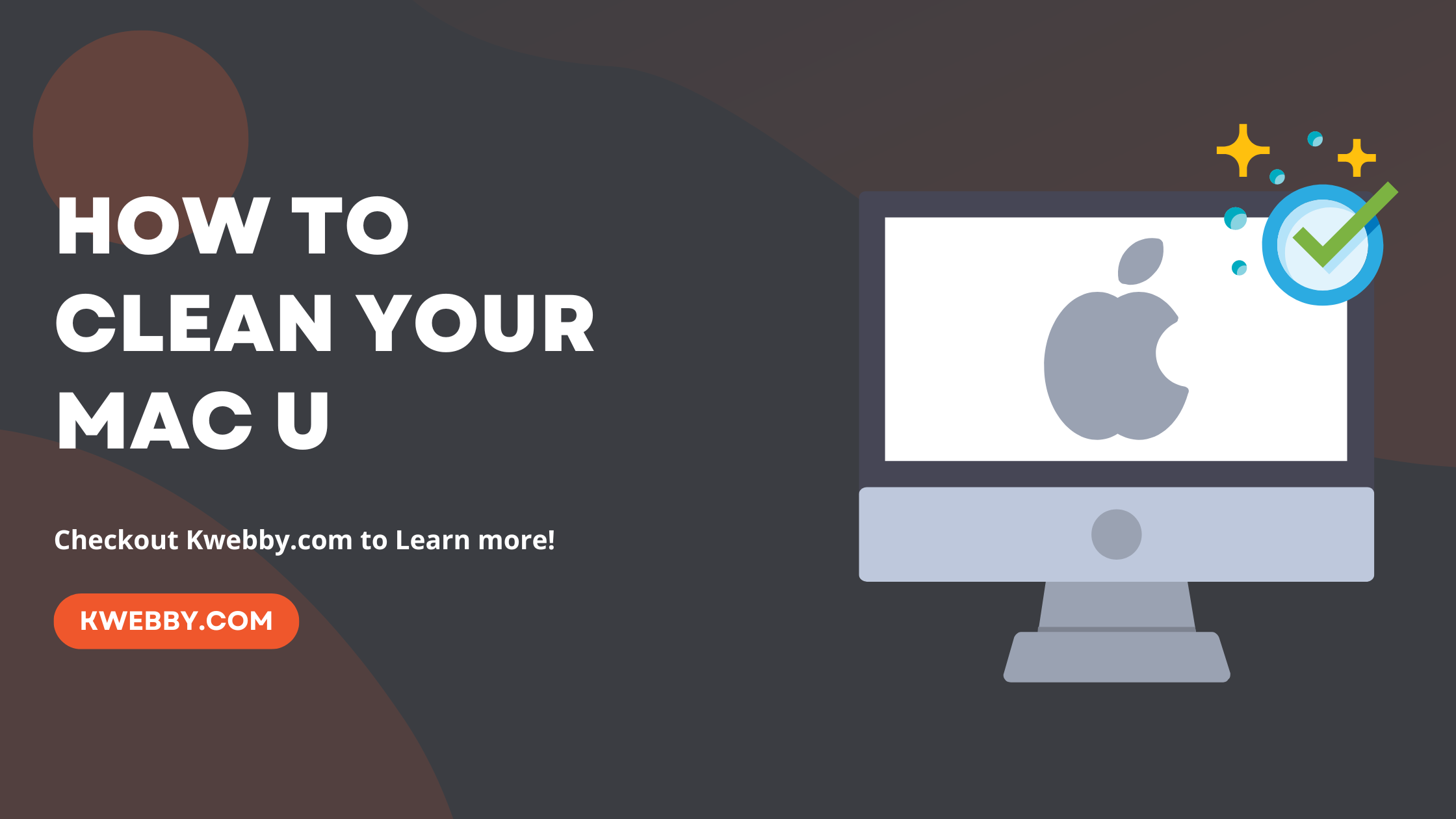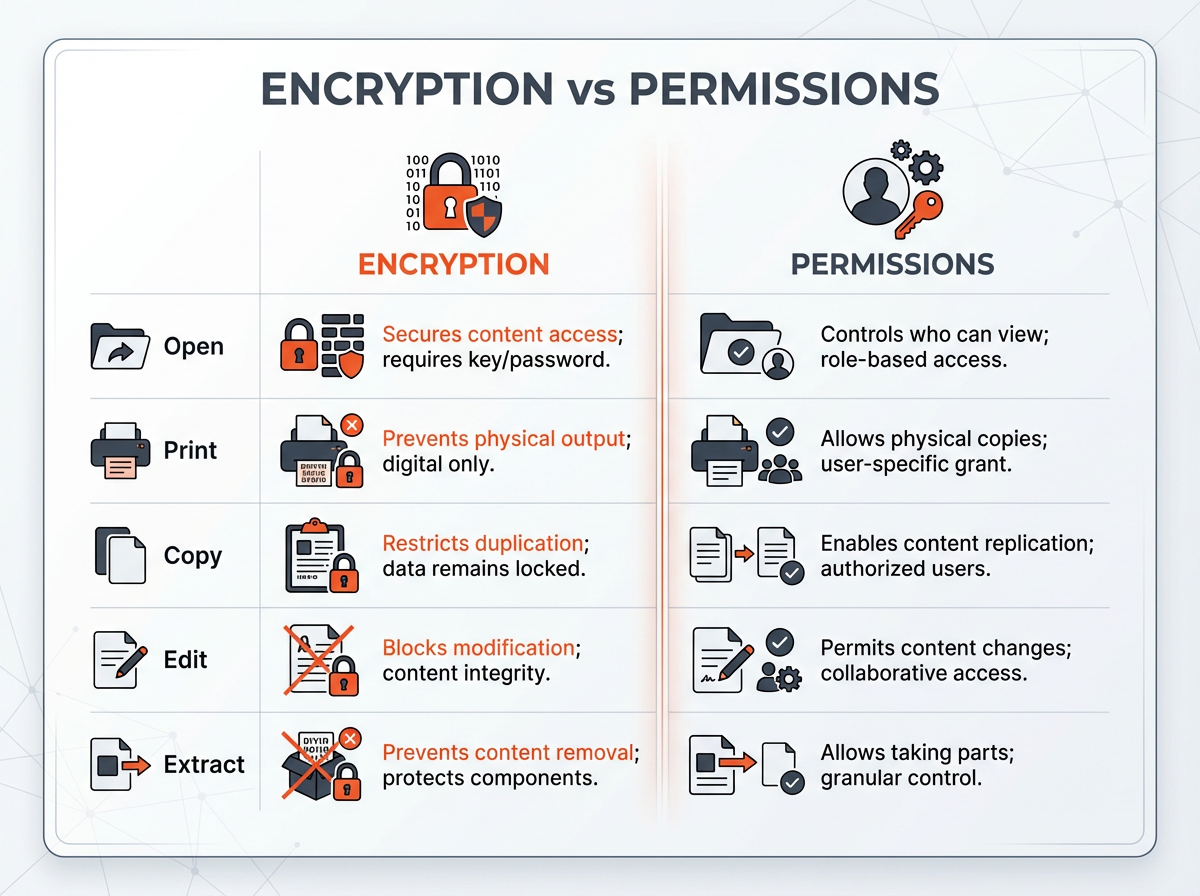Some individuals ask if they should clean their Macs. If you’re one of them, answer the following questions:
Does your Mac collapse when you launch several programs at once?
Is your Mac slow?
Do you get any messages notifying you that you’ve run out of storage?
If you answered yes to at least one of the questions above, it’s possible that your Mac requires some cleaning. Continue reading to find out how to clean up Mac.
How to clean & optimize your Mac Manually
Update software
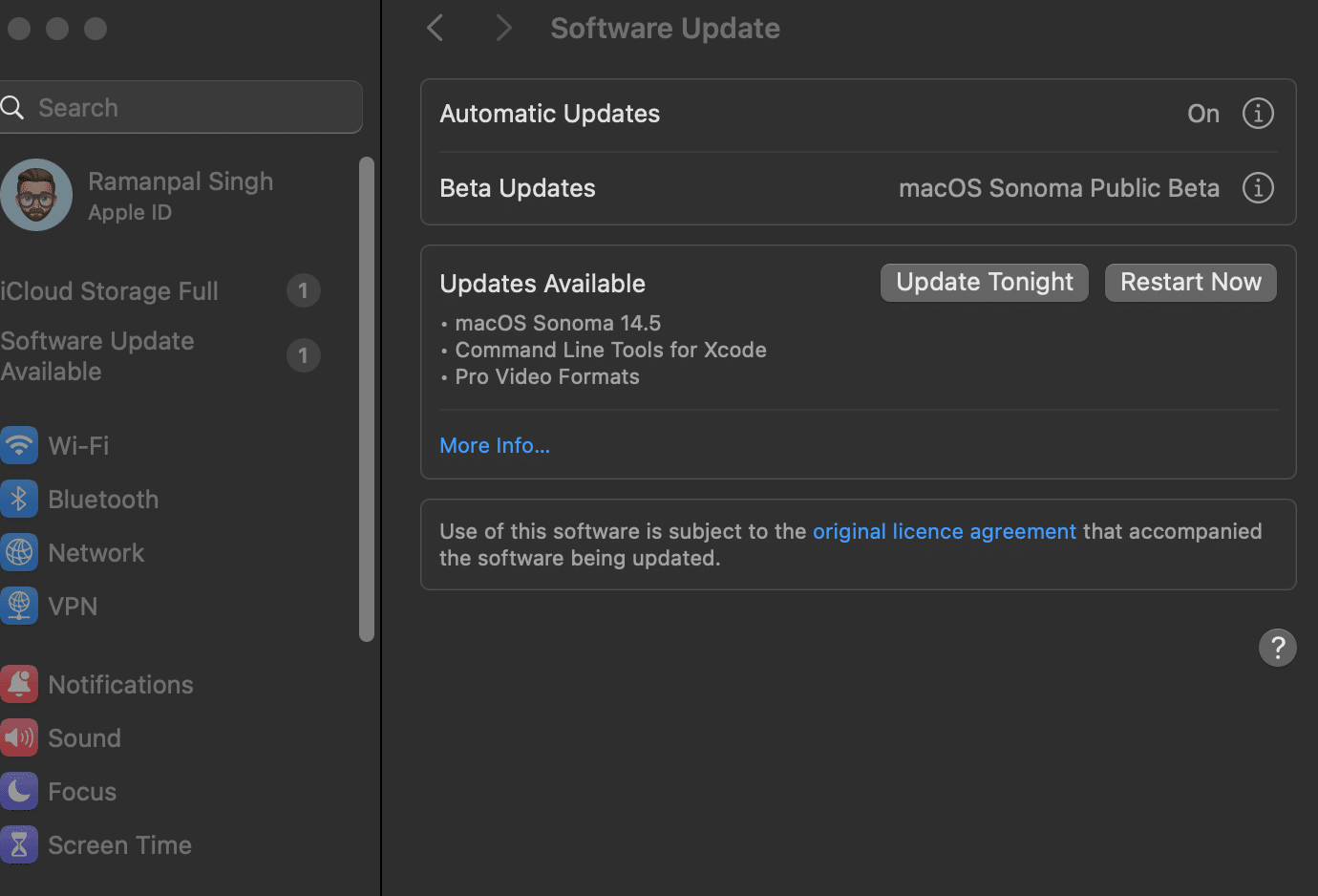
Keeping your Mac and its applications up-to-date is critical for ensuring optimal performance and eliminating glitches. By regularly updating, you not only enhance the efficiency of your Mac but also ensure a smoother operation of all the apps downloaded on your system. To apply software updates on your Mac, simply follow these steps:
Navigate to System Settings on your Mac.
Click on General, then select Software Update to check if any updates are available.
Should there be any updates, adhere to the on-screen prompts to download and install them, effectively keeping your Mac clean and efficient.
Enabling Automatic updates is beneficial as it ensures your system remains up-to-date without requiring manual checks, thus maintaining your Mac’s performance and security.
Following the software update on your Mac, it’s straightforward to ensure all your applications are up to date as well.

Here’s how you clean up your Mac by updating your apps, keeping it running smoothly:
To begin, open the App Store and select ‘Updates’ from the navigation pane. This action allows you to see all available app updates.
Next, simply click ‘Update All’ to initiate the update process for all listed applications. This step ensures that all the apps downloaded from the App Store are up to date, removing unnecessary files and potentially improving your Mac’s performance.
For applications that were acquired directly from the developers’ websites, you’ll need to launch each app that requires an update. Once open, choose ‘Check for Updates’ from the main menu (usually located in the top left corner under the application’s name). This helps in eliminating outdated versions that may occupy valuable storage space with junk files and unused apps.
In some cases, applications offer an option for automatic updates within their settings. This can be a convenient way to maintain the latest versions without manual intervention, contributing to an efficient mac cleanup process.
If automatic updates are not an option, and no updates are found within the application, your next step would be to visit the developer’s website directly. Typically, you’ll find a support section where information about the latest updates and how to apply them is provided. This ensures that all the files related to third-party applications on your Mac, including those that are not managed through the App Store, are current, reducing the accumulation of old backups, cache files, and other forms of system junk that can impede your Mac’s performance.
By diligently updating all the apps on your Mac, you not only keep the system clean and optimized but also enhance its security and functionality, making sure it runs efficiently and keeps unnecessary files and storage space usage to a minimum.
Uninstall apps you don’t use
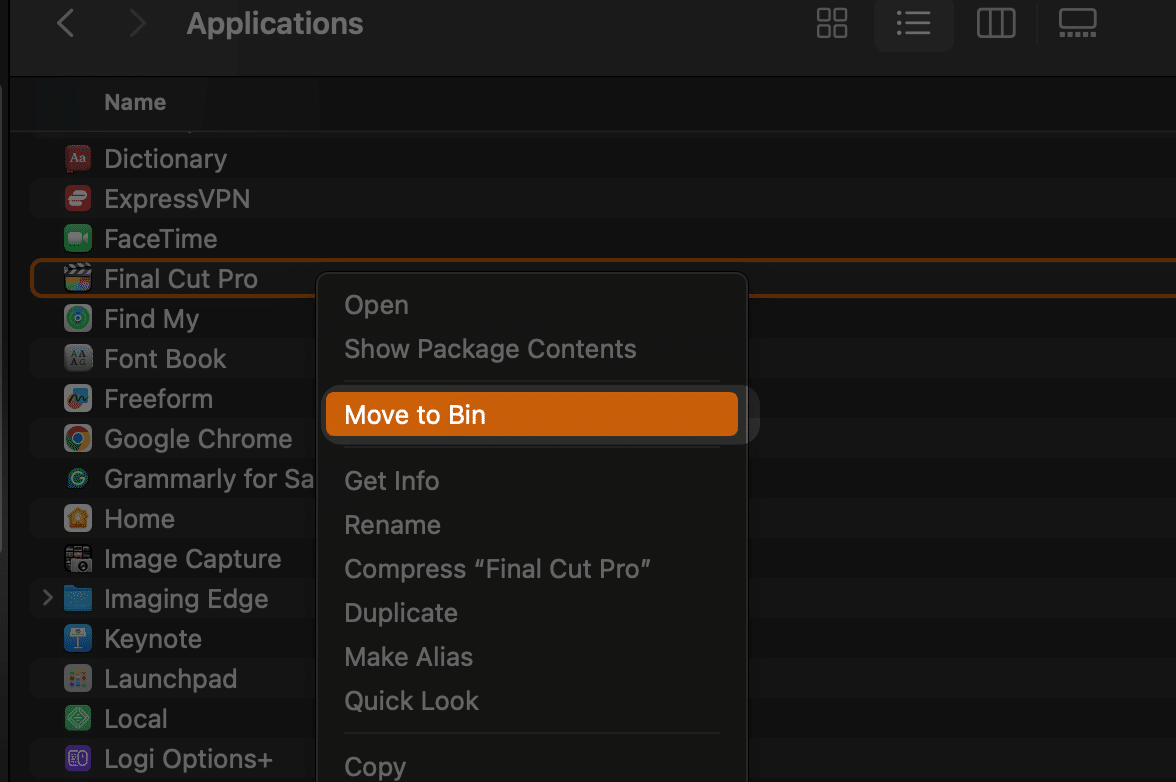
Naturally, the applications you have installed on your Mac take up space. And when your Mac fills up with apps, it may begin to run slowly. How to clean a MacBook? First and foremost, delete any programs that you no longer use or require. To do this, right-click the app you wish to delete and select Move to Trash/Bin.
You may be startled to learn that moving an app to the Trash/Bin does not totally delete it because software leftovers stay on your Mac, eating up a lot of space. So, if you want to be a responsible Mac user, you should uninstall software properly. Here’s a step-by-step guide for uninstalling apps on
Delete large and old files
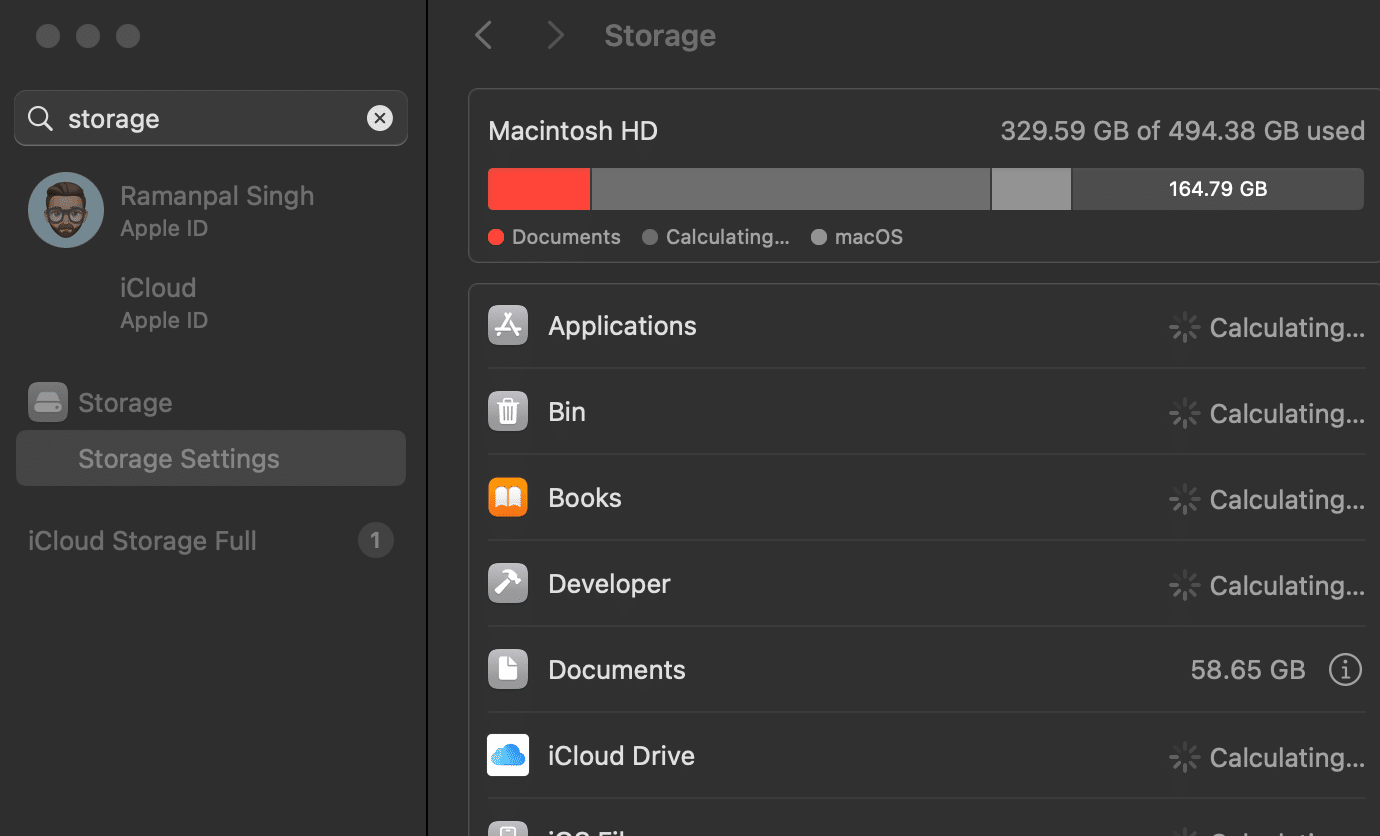
Keeping at least 15-20% of your main hard drive free is a well-known guideline among tech enthusiasts for maintaining optimal performance on your Mac.
This is not a fixed rule, but generally, the more free space your Mac has, the better it performs. Studies, including one conducted by a notable computer magazine, have shown that having more free space can boost your Mac’s speed by up to 35%.
This is especially crucial for those who deal with resource-intensive tasks such as graphics or video editing, where even more free space is advised for maintaining a smooth workflow.
How can you achieve this? One straightforward method is by deleting large and old files that consume precious disk space.
The process of freeing up space can be done manually, which requires locating and removing these files individually – a task that could be cumbersome and time-consuming.
Empty the Trash
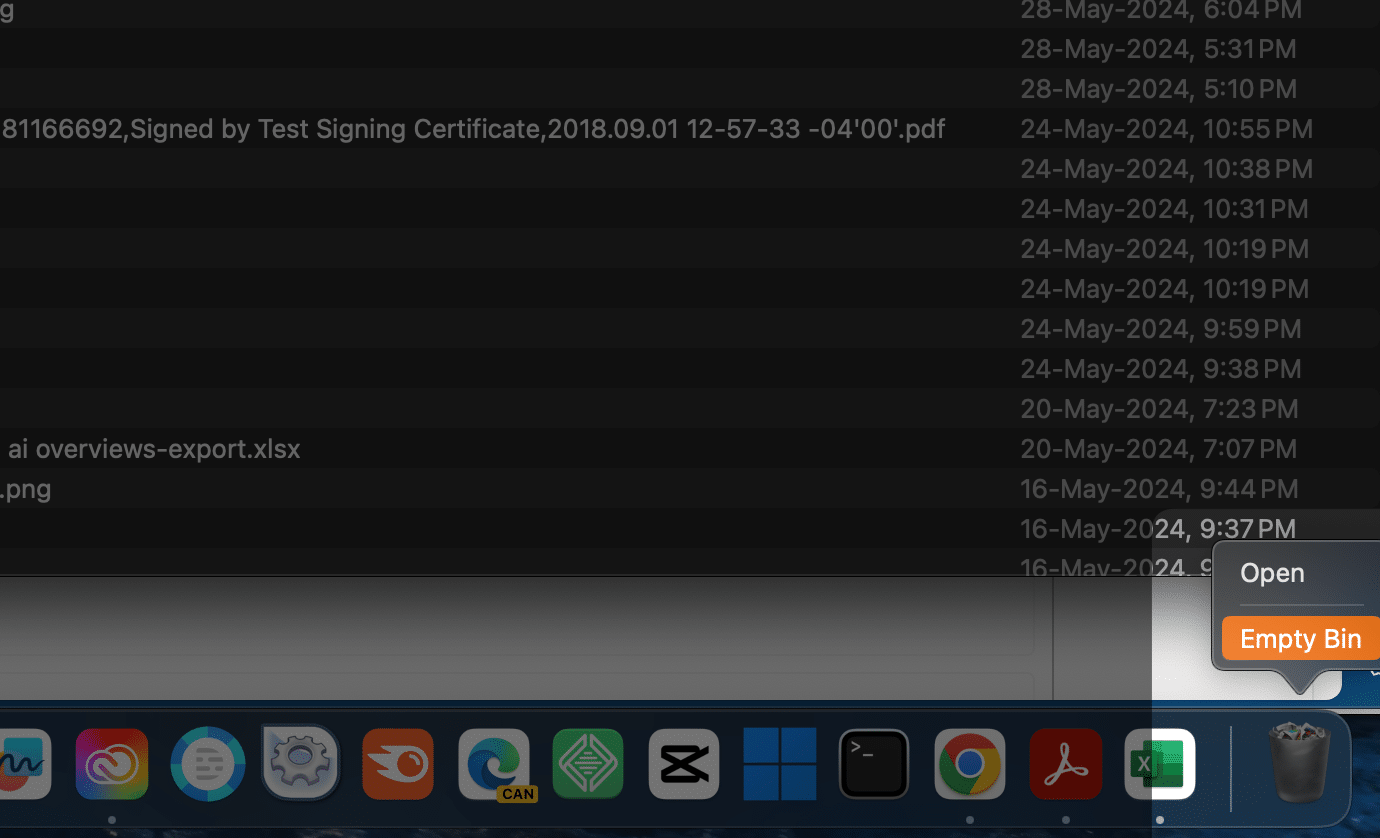
Despite deleting files, they linger in your Trash bin, occupying valuable storage on your Mac, essentially waiting for complete removal.
Recovering this crucial disk space necessitates emptying the Trash/Bin. Here are steps to thoroughly clean your MacBook of trash: Press and hold the Trash/Bin icon in the Dock, then select Empty Trash.
This simple action can significantly clear data, free up disk space, and contribute to your ongoing mac cleanup efforts, ensuring your system remains efficient by eliminating unnecessary files, old backups, and cached images that can slow down your Mac’s performance.
Optimize your storage
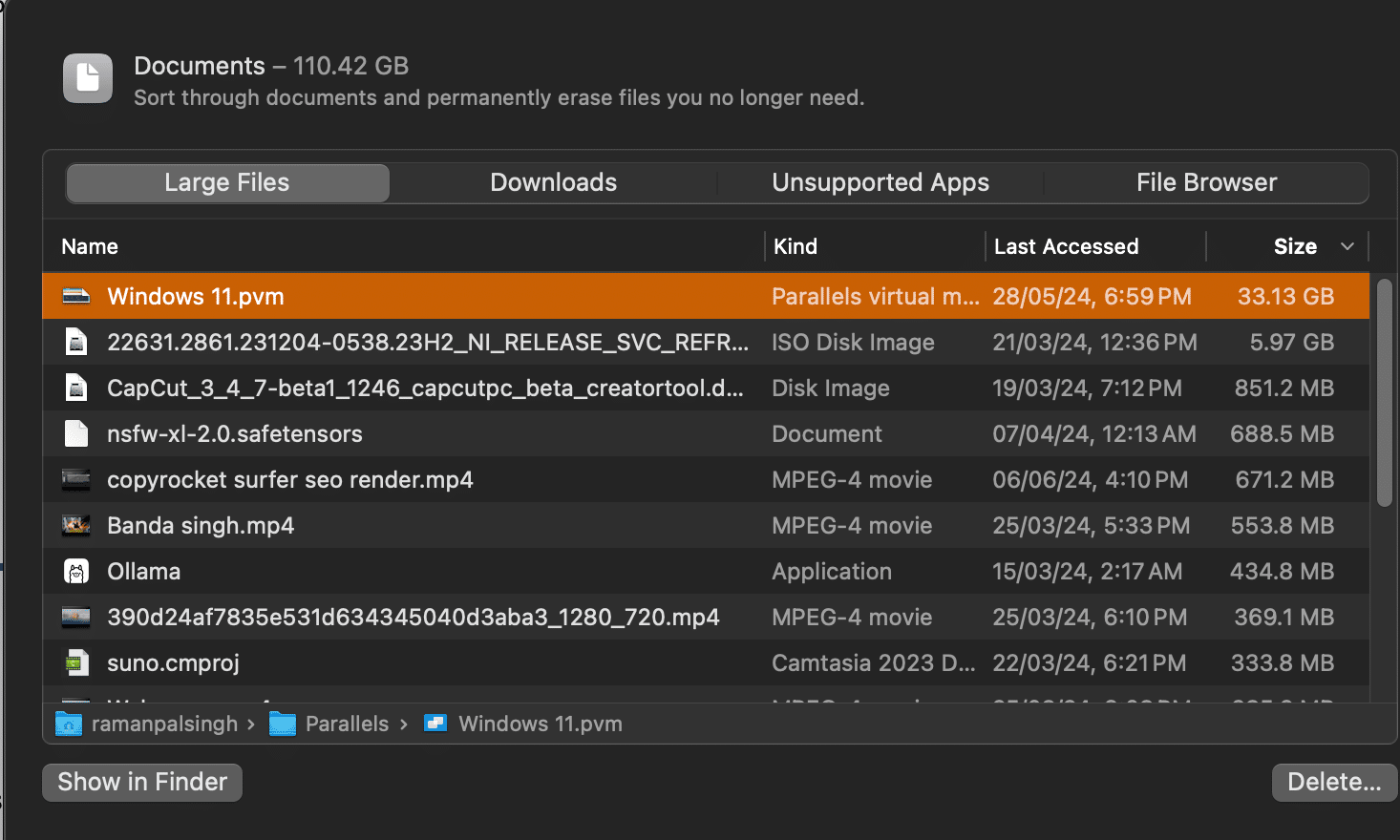
Apple has anticipated the potential for clutter accumulation on Macs and developed an integrated approach to manage it efficiently. To simplify clutter reduction on your Mac, follow these steps:
Navigate to System Settings and select General followed by Storage. This section displays the available storage on your Mac and offers recommendations for optimizing space.
Utilize the built-in Optimize Storage feature, which includes options such as Store in iCloud for transferring data to the cloud, or Optimize Storage to purge large media files.
Additionally, the interface allows for direct deletion of unnecessary files. Simply click on the info icon next to any category (e.g., Applications, Trash/Bin, or Documents) to view a list of stored items. Choose an item and click Delete to eliminate it, thereby optimizing your storage space.
Explore further recommendations within this section to efficiently utilize your Mac’s storage capacity, ensuring a cleaner, more organized system.
This process is part of a comprehensive Mac cleanup strategy, aiming to reduce junk files, clear cache files, and uninstall apps that are no longer needed. By maintaining the cleanliness of your Mac, you ensure that storage space is optimized, unnecessary files are removed, and your system runs more efficiently. This approach helps to keep your Mac clean and performance at its peak.
Clean up cache
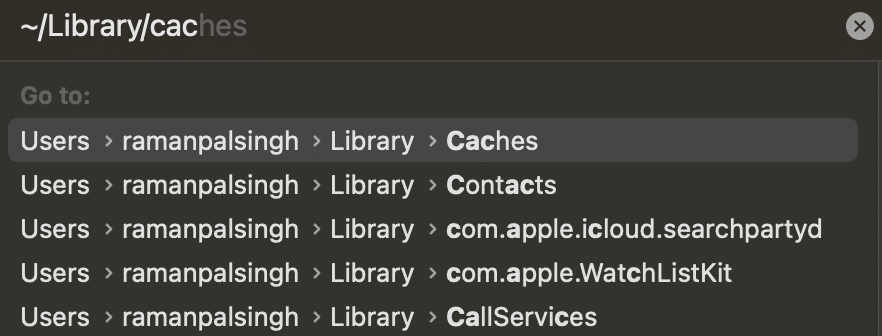
The common advice of “clearing your cache” serves as a basic troubleshooting step for web browsing issues. However, it’s essential to recognize that your Mac accumulates substantial data in cache files. These files are designed to expedite access to frequently used information, eliminating the need to reload it from the original source.
Yet, instead of improving performance, these cache files can consume considerable disk space on your Mac, ultimately hindering its efficiency.
To enhance your system’s speed, it’s recommended to purge these cache files. There are primarily two methods to accomplish this task: manually deleting the cache files or employing a tool like CleanMyMac X, which simplifies the process.
To Delete cache manually, Go to finder and click on “Go” on menu bar and then select “Go to folder” and then Type ~/Library/Caches/ in the window and click Go and delete all files in it.
This action can significantly aid in mac cleanup, managing system settings, removing unnecessary files, and freeing up valuable storage space, thereby keeping your Mac running smoothly and efficiently.
Delete unneeded Downloads
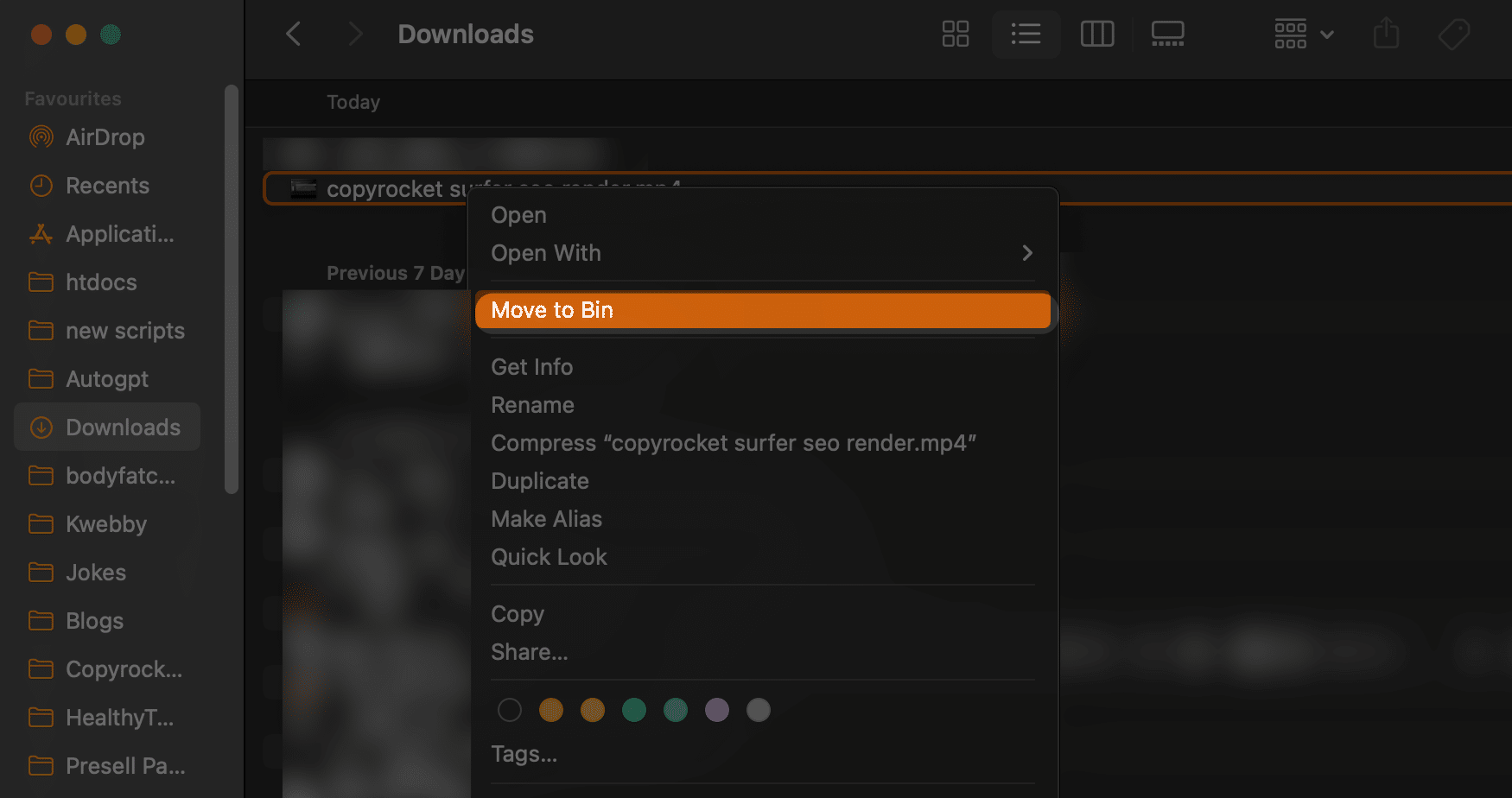
If you’re the type who downloads everything but never seems to clear it out, your Downloads folder might be overdue for a cleanup. Facing a mountain of accumulated files can be daunting, but here’s an efficient tactic to manage the clutter.
Begin by organizing the contents of your Downloads folder by the date they were added. This sorting will quickly unearth the oldest, oft-forgotten files lurking at the bottom.
Use your Mac’s keyboard to command-click and select multiple outdated or unnecessary items, then confidently move them to the Trash. This method is a vital part of mac cleanup, helping to retain only useful files and freeing up valuable storage space.
By regularly clearing out your Downloads folder, you prevent the accumulation of junk files and unused apps, ensuring your Mac remains organized and performs optimally.
Remove old backups
While having your files securely backed up gives peace of mind, accumulating old backups over time can significantly eat into your Mac’s storage space, dedicating gigabytes to outdated backup files.
To keep your Mac clean and ensure it has ample free disk space, it’s wise to purge these old iOS backups that you no longer need. Here’s a streamlined approach to eliminating unnecessary backup files effectively:
Initiate the cleanup process by clicking on the Apple menu, followed by selecting System Settings to adjust your system preferences.
Proceed to General and then click on Storage to review your disk space usage and identify areas for optimization.
Look for the “i” icon next to iOS Files for details on stored backups.
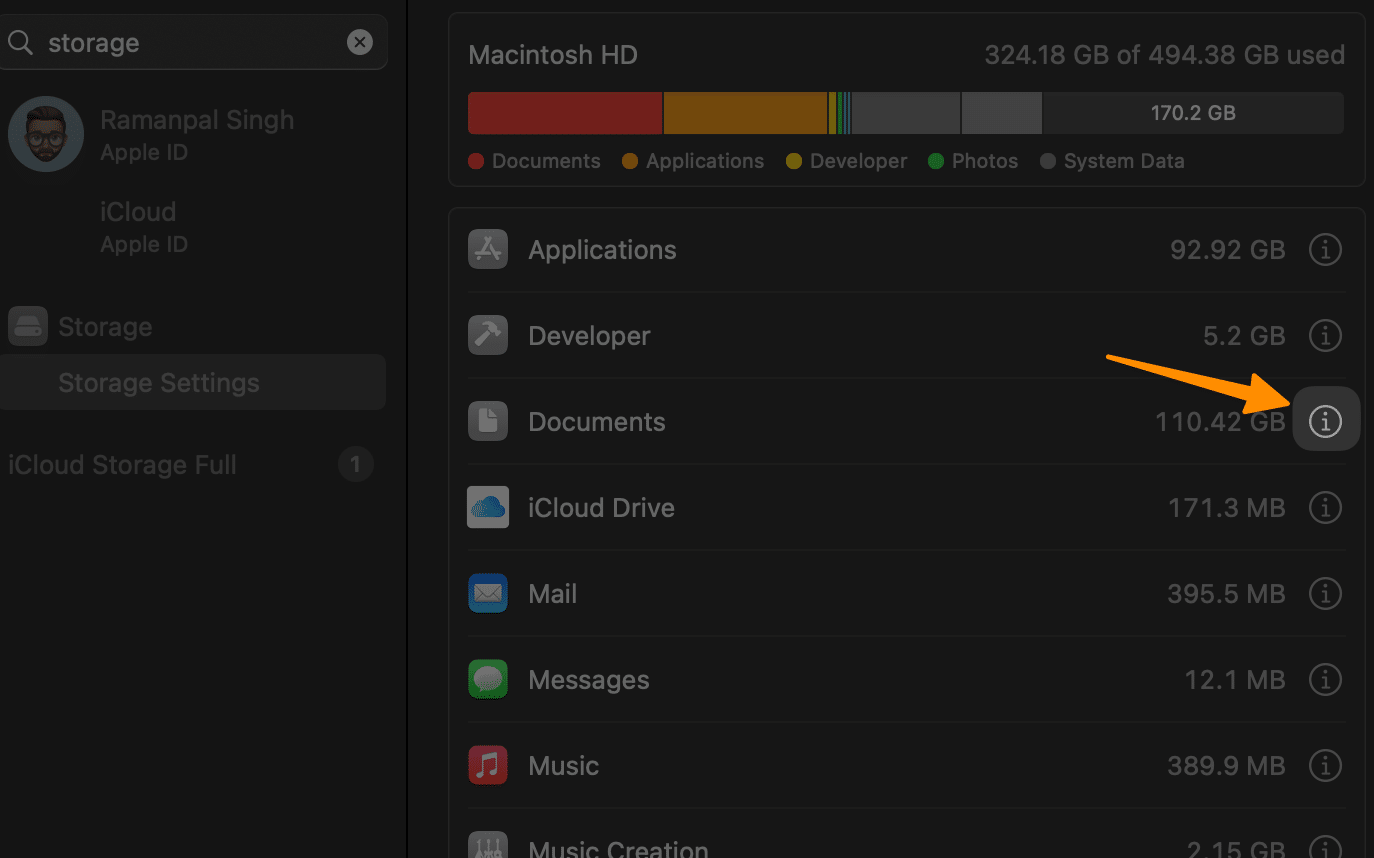
Pinpoint the specific backup you wish to eliminate and click Delete to remove it, thus reclaiming storage space on your Mac, It can be a Mail attachments, Hidden files and much more.
Conclude the operation by clicking Done, effectively freeing your Mac from the clutches of redundant backup files.
This method not only simplifies mac cleanup but also enhances your Mac’s performance by liberating valuable disk space from the grasp of old backups, aligning with effective strategies for maintaining a clean, efficient, and optimized Mac environment.
Organize your desktop
The desktop of a Mac often becomes a default storage spot for many users, inadvertently transforming it into a cluttered space crammed with files. This accumulation can lead to diminished Finder performance, making the Mac operate more slowly.
Echoing one of the most impactful suggestions for Mac cleanliness, tidying up the desktop can work wonders for your system’s efficiency. Instead of allowing your desktop to be overrun with files, implementing an organizational system by categorizing them into folders is advisable.
macOS offers a native solution to this issue with the Stacks feature, which organizes files automatically. By simply right-clicking on the desktop and selecting Use Stacks, your files will be neatly grouped, simplifying the cleaning process.
Furthermore, leveraging cloud storage services like Google Drive or Dropbox, or utilizing external storage solutions, is an effective strategy to keep your desktop uncluttered while ensuring that all important files remain accessible.
This practice not only enhances your Mac’s performance but also plays a crucial role in maintaining a clean and organized workspace, thereby contributing significantly to overall Mac cleanup efforts.
Remove Startup and Login Items
Startup items, often apps that automatically activate upon booting your Mac, have a penchant for inserting themselves into your Login Items list which open multiple apps, thereby asserting their presence each time you start up. This can be less than ideal for several reasons.
First, identifying these apps might not always be straightforward, as they don’t always show up in the Dock, making it hard to pinpoint exactly what’s running in the background.
Secondly, these applications can be quite resource-hungry, using up precious memory that could be better allocated elsewhere. For those looking to keep their Mac clean and functioning optimally, managing these startup programs is a critical step.
To do this, begin by accessing the System Settings through the Apple menu, navigating to General, and then selecting Login Items. From here, you can easily disable any unnecessary startup programs.
This action not only helps in clearing up memory but also contributes significantly to overall Mac optimization and maintenance, ensuring your machine stays clean, fast, and efficient.
Bonus tip: Physically clean your Mac
Our final piece of advice centers on the necessity of physically maintaining your Mac’s cleanliness. Starting with the keyboard, which is in constant use and thus accumulates dirt quickly, it’s important to address the accumulation of debris, especially food particles that can become permanent residents beneath the keys.
For those pondering the optimal method to clean a Mac’s keyboard, the process is straightforward and devoid of complex rules. Occasional use of compressed air can eject dust and other small particles from your keyboard.
Additionally, employing disinfecting wipes or alcohol-based sprays, applied with a gentle wiping motion, can restore the keys’ cleanliness and sheen. Equally crucial is the screen’s upkeep. While it might appear clean at a glance, a closer inspection often reveals otherwise.
Cleaning the screen requires nothing more than a soft cloth and distilled water, making sure to moisten the cloth rather than applying water directly to the screen, and wiping softly to remove any marks or fingerprints.
This simple yet effective method ensures both the functionality and aesthetic appeal of your Mac. By incorporating these practices into your routine, you’re not just cleaning your Mac but preserving its operational efficiency and extending its lifespan, integral aspects of comprehensive mac cleanup and maintenance efforts.
Frequently Asked Questions (FAQs)
About Cleaning Your Mac Screen
Why is it important to clean your Mac screen regularly?
Regularly cleaning your Mac screen is crucial for maintaining its functionality and aesthetic appeal. Over time, dust, dirt, and fingerprints can accumulate on the screen’s surface, obstructing visibility and potentially causing damage to the display. By keeping your screen clean, you ensure a clear and high-quality viewing experience.
What is the best way to clean a Mac screen?
The best way to clean a Mac screen is by using a soft cloth moistened with distilled water. It’s essential to avoid harsh chemicals or abrasive cloths that can damage the screen’s surface. Gently wipe away any marks or fingerprints in a circular motion, making sure not to apply too much pressure.
For tougher spots, a 50/50 mixture of distilled water and white vinegar can be used. However, it’s essential to avoid getting any liquid inside the crevices or ports of your Mac.
How often should you clean your Mac screen?
The frequency of cleaning your Mac screen will depend on how often you use it and the environment in which you use it. If you regularly work in a dusty or dirty environment, it’s best to clean your screen at least once a week. For those who use their Macs less frequently, a monthly cleaning may suffice.
It’s also essential to spot clean as needed, especially if there are visible marks or fingerprints on the screen.
Final Thoughts
Overall, take care with your system files. Do not delete anything you are unsure about. If you are not totally sure in your ability to perform the operation on your own, utilize a specialist program such as CleanMyMac X to get a new and clean Mac in two clicks.
Test your knowledge
Take a quick 5-question quiz based on this page.







